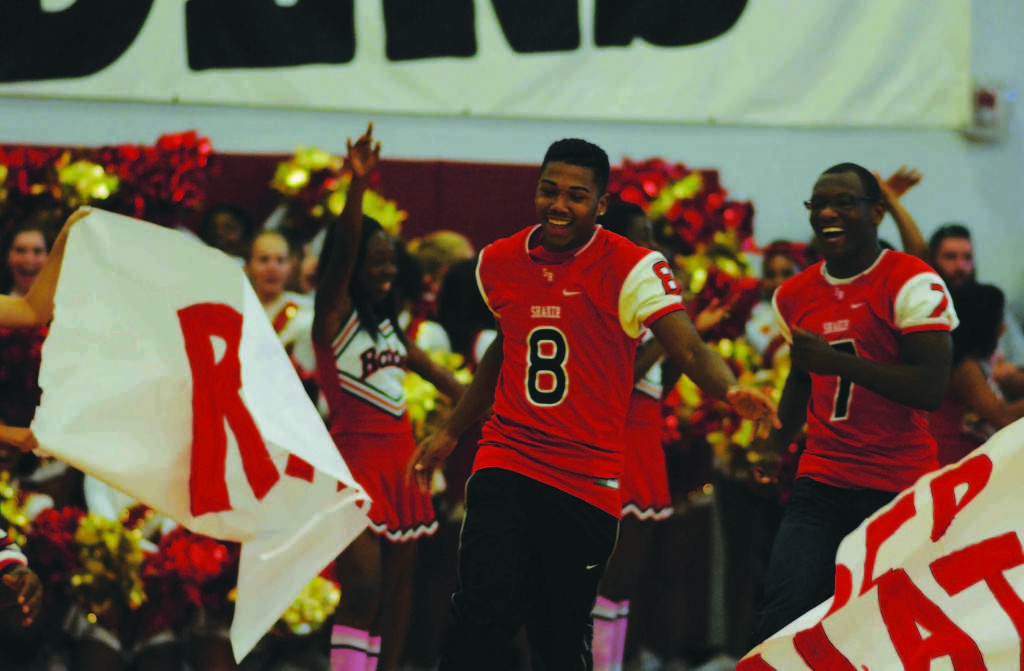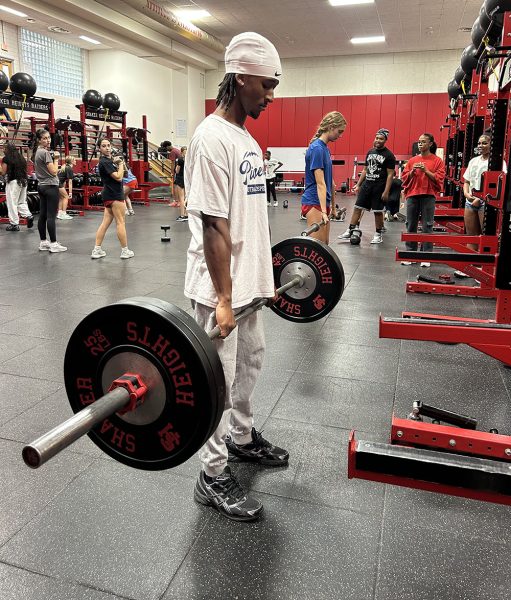Why We Lack School Spirit
Diversity, poor behavior and negative traditions have eroded students’ sense of unity

This story will appear in the upcoming issue of The Shakerite, released this week.
—
Early in every Shaker student’s life, we learn about our district’s diversity.
Students, parents, teachers and administrators cherish diversity — so much so that almost every photo on our district’s home page features students of at least two different races, usually black and white. It’s our thing.
At some point, though, that unblemished image of diversity deteriorates.
Woodbury students enter different academic tracks based on proficiency. Naturally, students form social groups within their classes. In middle school, students self-segregate at lunch. Certain classes are divided by academic difficulty, and the achievement gap widens. In high school, the cafeteria remains mostly segregated. Additionally, the achievement gap peaks, when rigor in courses — AP classes and CP classes — becomes more unequal than ever before.
Instead of true diversity, we have separate populations focused more on differences than similarities. White students and black students. AP students and IB students. Struggling students and gifted students. “Popular” students and “unpopular” students. And within each population are subdivisions, each with its own characteristics.
In many situations — most notably SGORR, marching band, art and theater classes — there are strong, friendly relationships between students of different backgrounds. But any look around the cafeteria — or in AP and CP classes — will show that nearly all students associate with homogeneous groups, often determined by race or academics.
Students at other high schools often have more in common — race, family income, academic level, etc. — than not. Here, some students live in seven-figure houses; meanwhile, one in three Shaker students lives in poverty. Some students are accepted to Ivy League schools; meanwhile, in 2011, one in five freshmen were held back for failing one or more classes.
With that gap, it’s hard to unify the student body around any commonalities. Thus, students affiliate more with their homogeneous populations than with Shaker as a whole.
Then a vicious cycle begins: few students have school spirit, so spirit becomes uncool. Since it’s uncool, fewer students will have spirit, thereby making it less cool, and so on.
We also have a behavior problem. Misbehaved students (Hutch would call them “weeds”) ruin traditions for the well-behaved majority (or “flowers”).
A few telling examples: hazing, fighting and egg throwing ended pep rallies; hostile bickering and petty fighting ended Homecoming and Prom court and public intoxication ended 9 p.m. hockey games. When home hockey games were rescheduled to 6:45 p.m., seniors stopped attending. At one home game that year, there were seven seniors in attendance. Bad behavior hurts spirit.
Often, it seems our only school spirit isn’t pro-Shaker, but anti-other schools. Waving white trash bags or wearing flannel for Mentor games; chanting “Don’t drop the soap!” at St. Edwards and, everybody’s favorite, celebrating prep day before University School games. It’s ironic for Shaker — our favorite traditions involve stereotyping entire groups of people.
The traditions are relatively harmless. However, they show something: to an extent, we are not often united as a school — more often, we are united against another school.
Student leadership needs to unite the student body, and that leadership is not limited to Student Council, which should not be the sole manufacturer and organizer of school spirit. Student leaders — MAC Scholars, SGORR leaders, sports captains and more — have a responsibility to foster school spirit as best they can within their groups.
Reintroducing pep rallies — because that’s what they are, not “spirit programs” — is a promising start. These events foster pro-Shaker pride instead of galvanizing anti-opponent sentiment.
For school spirit to flourish, polar populations — black and white, IB and AP, gifted and struggling — must coalesce into one unified Shaker community. We must focus on similarities, not differences. Our diversity is only as good as our unity.
—
Opinion editors asked Principal Michael Griffith for a pep rally for field hockey players this Thursday. Read their open letter here.
Read Spotlight Editor Clara Medalie’s story about school unity on page 15.



Hartley Brody | Oct 30, 2013 at 6:17 pm
It’s super reassuring to know that this conversations are still alive and well in the halls at Shaker. Like David, I saw some of this stuff first hand as an ’08 grad and president of student council my senior year.
A passionate community — from which “spirit” naturally flows — can’t be top down. It’s not up to student council or SGORR or the administration to make the Shaker community flourish. That must come from the students. But those groups *should* be responsible for removing barriers to a strong, healthy community whenever they can.
I applaud the open letter to Mr. Griffith asking for a proper pep rally for the women’s field hockey team. These are exactly the sorts of places where the leaders of the community need to step up and allow Shaker students to come together for a common cause.
We can’t let a few weeds ruin it for everyone else.
Be the best.
David Goldsmith | Oct 30, 2013 at 10:11 am
I love that these conversations are happening at Shaker, and it shows the struggles that a school like ours faces. I saw the same “issues” first hand, but I feel as though our era still was unified as a school and community. Is there a way to combat the notion of apathy being cool, and is that a problem with Shaker or just millennials in general? There are always going to be the “weeds” that become “flowers” (a la Hutch), but what about those that embody the opposite paradigm shift? And lastly, what is wrong with the notion of unifying against a common enemy? Red Sox fans unite based on their common hatred of the Yankees, and the analogous situations are endless. In 2006, a local paper called our school thugs, yet the HEAVY majority of my fellow classmates (of all races and socioeconomic background) have taken what we learned at Shaker and used it to become successful in whatever route each of us has chosen. Shaker certainly isn’t the perfect school and there are always challenges, new and old, that communities need to overcome. However, I am very proud of the culture that I was raised in and hope that we don’t focus on he negatives of what SHHS represents, and focus on bringing he positives to light.
David Goldsmith
SHHS c/o 2006